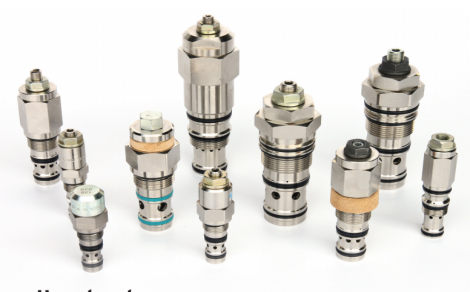- Home » Editorial » Hydraulics
How to chose a hydraulic overcentre valve

By Tolu Oluwatudimu, EMEA product manager, screw-in cartridge valves, Eaton.
Overcentre valves play an integral role in safely controlling an actuator that is holding a load or a person in the air. However, there are various types of overcentre valve available on the market to suit very different applications.
Selection criteria
When selecting overcentre valves, many options exist, and few people really understand them all. This fact has led engineers to select valves from familiar suppliers without really questioning or understanding their choice. Eaton can help solve this problem with the industry’s broadest portfolio of overcentre valves.
Overcentre valves protect cylinders from unwanted downward drift. This function is referred to as load holding and is important in aerial work platforms. Users can also deploy overcentre valves to control loads by preventing actuators from running ahead of the pump due to energy created by the load. This function prevents loss of control and damage to the actuator caused by cavitation.
Additionally, in cases where a hydraulic line breaks, a load-holding valve mounted to the actuator will prevent uncontrolled and unsafe load motion.
Basic overcentre application
For most applications, the most costeffective solution is to use a basic loadholding valve, such as the Eaton 1CE, which is suitable for use with static or dynamic loads when trying to stop a load from running away.
A common example is a cherry picker, where the load is often a person. If instability occurs while using a standard overcentre valve, consider changing the valve’s pilot ratio. Most overcentre valves are available with a variety of pilot ratios and are interchangeable. Handling induced pressure
Some machines, such as wheel loaders, are designed using closed-centre directional valves, while also requiring the use of overcentre valves. This configuration brings additional challenges if the machine bucket is driven into a pile of rock, soil or manure. Not only can pressure be trapped between the directional valve and overcentre valve but a high induced pressure will result, and the cylinder will need to give in order to prevent mechanical damage.
If a standard overcentre valve is used in this situation, a tremendous amount of pilot pressure would be needed to open it, while the port reliefs on the directional valve would also be rendered inoperative. A common solution is to use a fully balanced valve with an atmospheric drain, but these are susceptible to contamination and subsequent leakage. Instead, a partbalanced valve, such as Eaton’s 1CER, can overcome this issue.
When pressure builds between the closed-centre directional valve and the overcentre valve, it is applied to the valve port of the latter. The 1CER references the added pressure on the valve port to the spring chamber so that it acts on both ends of the poppet and becomes balanced, significantly reducing the pilot pressure needed to open it.
-
PPMA 2025
23 September, 2025, 9:30 - 25 September, 2025, 16:00
NEC, Birmingham UK -
Advanced Engineering Show 2025
29 October, 2025, 9:00 - 30 October, 2025, 16:00
NEC, Birmingham UK










